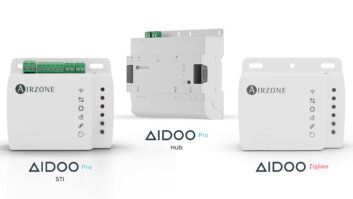
“How’s business?” Every chance encounter I have seems to begin this way… The response is usually the same each time: “Good, but we’re having a heck of a time finding good people.”
We have these conversations every day, expressing the same laments each time year after year. This means it’s either unimportant or we perceive it would be way too hard to solve, so why bother? The mountain’s too high, we can’t swim the sea, so we give up. What if we decided to change that and engineer a different reality for ourselves?
First let’s consider the challenge: Why is it so hard to find good people? Like most thorny issues, while they may appear monolithic at first, they start to reveal themselves as smaller bite-sized challenges upon closer inspection. Here’s how they shake out when it comes to attracting Grade A talent:
You
That’s right. Sorry to be the bearer of bad news but one of the biggest impediments to catching the “big one” may be your own blind spots. Consider asking some tough questions to find out. How well are you communicating the mission, vision, and values of the organization to your employees, vendors, and customers? Are you micromanaging every aspect of the business? Are your employees having fun at work? Depending on your answers, the journey may start here and involve some radical candor with the person in the mirror. Are you open to change and getting out of your own way? If not, stop here.
Culture
You know the adage, “You have a culture, but is it the one you want?” Failing to invest in your culture is like spending money on Google AdWords and sending prospective buyers to a crappy website. You’d never do that, so why treat the company any differently? Job seekers will instantly get a sense of your culture the second they walk in the door. Long before that moment, candidates will have seen you all over social media and formed their own opinions well ahead of sitting down across the table from you.
Outreach
What would happen if we spent half the time recruiting new hires that we did trying to land new business? What if hiring new all-star employees rose to the same level of importance as selling new shiny objects to our clients? Think back to the beginning of your business. Maybe you’ve experienced an uninterrupted boulevard of green lights, but most likely there was a lot of good old fashioned hard work casting around for sources of new projects (ideally it was referral sources like builders or other specifiers). How long did that take — two to three years? Maybe you’re still in the middle of it. If you’re like me, the answer is, “We are never done.” There’s always more work and competitors looking to eat your lunch. The same holds true for your potential employees.
If we understand that in order to get paying customers beating a path to our door, we need to deliver quality solutions at a fair price and create raving fans, then we have a perfect employee magnet formula. It’s the same thing! No need to reinvent the wheel, we just have to spend time engaging in the same activities, but this time it’s new hires we want. We don’t do this right now because we perceive that paying customers are more important. And for a new business, they are. Nothing happens until you sell something, and I understand this message is best digested by more established businesses.
What are your employees telling their friends about working at your company? Are they hanging out with like-minded people? Are you incentivizing referrals by your employees? We pay $1000 for any new hire who makes it six months at Livewire.
How are you advertising your company to new employees? Is all your content customer-facing or are there people-focused stories highlighting the feats of amazing employees? If your company won’t grow without people, to what degree are you putting your people first in customer-facing content on social media, web, email, and video channels?
The On-Ramp
Just like paying customers need a soft place to land after they’ve arrived at your door from a customer referral or web search, job seekers are no different. What happens after they click “Submit Application” on your site? Who is responsible for responding to job applications? How quickly do you respond? Do your interviews follow a specific format or are they left up to a disparate set of hiring managers?
No matter what happens after candidates apply for a job with your company, contrast it with your sales and project workflows. Potential hires deserve the same attention as your clients and the quality of your hiring funnel will improve dramatically as a result.
Related: Paul Starkey vs. Staffing
Don’t discount the benefits of growing your own A Players over the long haul. Consider establishing relationships with local trade schools and creating internship or shadowing programs that complement their curricula. While this may seem like a tremendous investment of resources and distraction short term, think of this as the sales equivalent of RMR. It’s slow to build but once the flywheel is spinning, it’s pretty stunning to stand back and behold.
Are you up promoting your hiring efforts to the same level of importance as bringing new business in the door? Does that scare you? Make you uncomfortable? Good.
Stay frosty, and see you in the field.
Henry Clifford is president of Livewire, an integration firm in Richmond, VA. He also serves on the CEDIA Business Working Group and writes a bi-monthly blog for Residential Systems.







